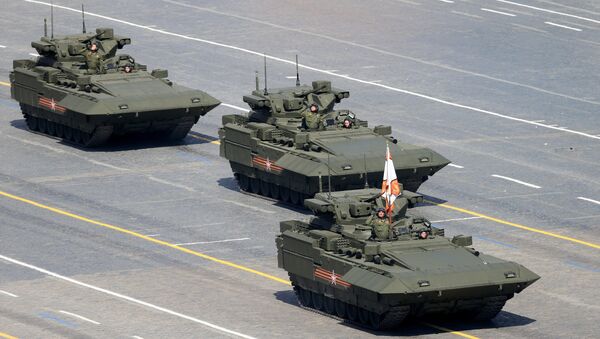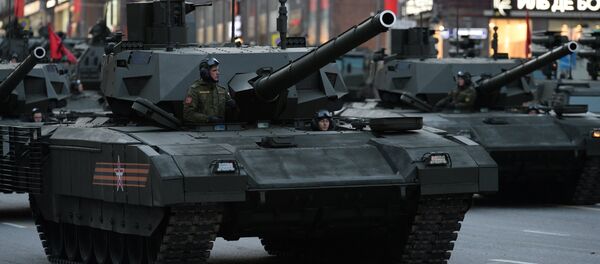Russia’s defense industry has in the past few years come up with a flurry of new weapons the US will find hard to compete with. Moreover, Russia has been making a noticeable headway in areas where America traditionally had an edge, Popular Mechanics magazine wrote Monday.
In the event of a new Cold War, Russia would beat the US in the number and quality of tanks and air defense systems, while in the field of artillery pieces the two countries are moving neck and neck, PM writes, assessing Moscow’ and Washington’s military potential against the backdrop of the ongoing conflict in Ukraine.
The speculation, based on media reports and backed up by its design, is that the tank will receive a new 152mm main gun, making it a well-armed apex predator that is hard to kill.
Meanwhile, the United States is busy trying to keep its aging tanks ready for action.
The effort has focused on keeping the M1A1 Abrams ready and deadly in the 21st century, but, according to PM, all these attempts to make the Abrams fit for 21st century combat are doomed to fail.
Nothing in this world causes as much shock and awe as a rain of nuclear warheads.
Fully aware of this Russia and the US are spending much time and effort developing effective missile defense systems.
The two countries both have mid- and long-range missile vehicles, but they designed their systems with different ethos. The United States has the M142 High Mobility Artillery Rocket System (HIMARS).It can carry six 227mm rockets that can sprinkle the area below with deadly sub munitions.
The Russians, on the other hand, tend to go for volume over accuracy. Their Multiple Launch Rocket Systems are trucks fit with lots of rocket tubes.
However, they also have longer-range mobile missiles that could target NATO bases, airfields, troop concentrations, and civilians.
At the top of the list of deadly long-range missiles is the Iskander-M tactical missile system. It can be ready to shoot 250 miles in just 20 minutes, delivering an 880-pound warhead to a target within 15 feet of where it's aimed.
Russia and the US are also neck and neck when it comes to conventional artillery systems. The US M777 howitzer can be hoisted by an MV-22 Osprey, enabling the big guns to keep up with the fight. Other US big guns are self-propelled — mounted on a tracked chassis — but they are not so new.
The M109 Paladin is the go-to mobile artillery piece for the Army, introduced in 1969 and updated to its current variant, the M109A7.
That version has an electric drive system — extra juice to power future upgrades and the ability to throw four 155mm rounds a minute.
This year Russia showcased its newest 2S35 Koalitsiya-SV self-propelled guns. As part of one recent enhancement used to score precise hits, its 155mm round can now hone in on a target designated by a laser.
The real advantage in this design is the ability to choose different rounds and have a robotic system automatically load it.
Popular Mechanics still believes that the US artillery is more mobile compared to Russia’s.
The US is also ahead in terms of military robotics, PM notes adding however, that the Russians have not sat idly by, displaying families of ground robots that can clear minefields, fight fires, and shoot anti-tank missiles.
By 2025, one-third of Russia's military hardware will be robotic, PM wrote.
In the final account, the magazine assessed Russia's military potential as being higher compared to that of the US.




